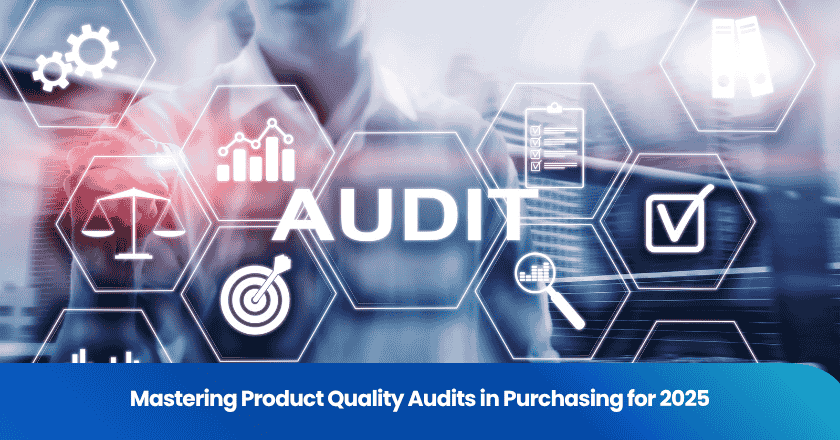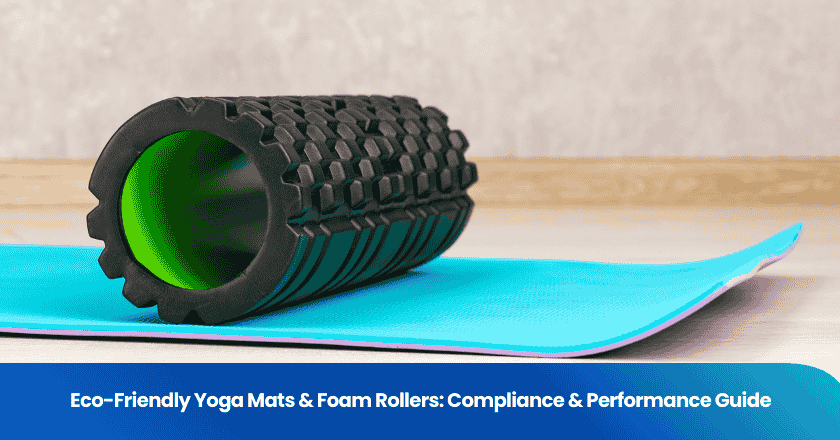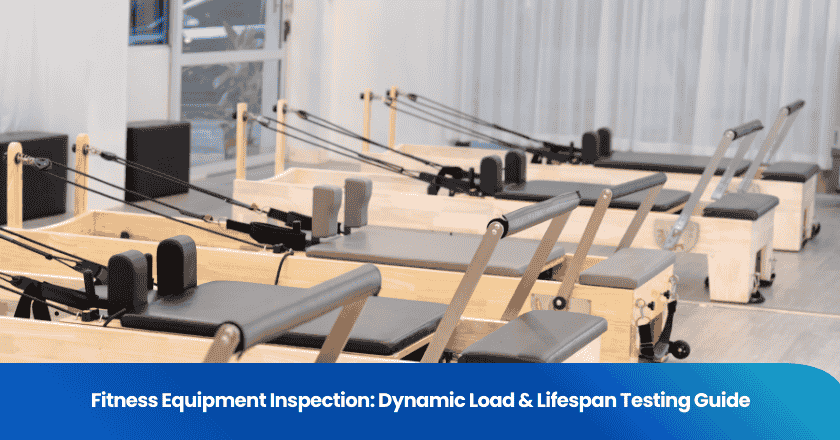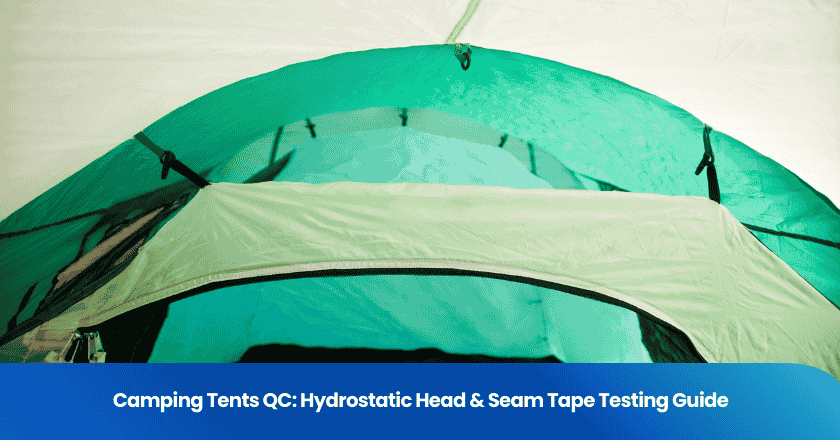
You face increasing pressure to ensure every audit delivers real value. Buyers like you must verify supplier reliability and manage risk at every step. Purchase product quality audit practices now shape your ability to meet compliance requirements and safeguard your supply chain. When you make audits routine, you empower buyers to spot issues early. A systematic audit approach helps buyers maintain high standards and drive continuous improvement.
Audit Importance
Supplier Reliability
You depend on reliable suppliers to maintain consistent product quality. A supplier audit helps you evaluate each supplier’s ability to meet your requirements. You review their processes, facilities, and documentation. You check if they follow quality standards and deliver products that match your expectations. When you conduct a supplier audit, you identify gaps in their systems. You can address these issues before they affect your supply chain. Reliable suppliers reduce disruptions and help you achieve your business goals.
You should:
a. Schedule regular supplier audits.
b. Assess supplier performance against quality standards.
c. Monitor corrective actions after each audit.
Risk Management
You face risks in every purchasing decision. A supplier audit allows you to spot potential problems early. You examine supplier records, production methods, and compliance with quality standards. You look for signs of inconsistent quality or process failures. When you find risks, you can act quickly to prevent costly mistakes. You protect your organization from supply chain interruptions and reputational damage.
Tip: Use supplier audit checklists to ensure you cover all risk factors during each audit.
Compliance
You must ensure that suppliers follow all relevant regulations and contractual obligations. A supplier audit verifies that suppliers meet legal requirements and industry quality standards. You review documentation, certifications, and audit reports. You confirm that suppliers comply with environmental, safety, and labor laws. When you perform a supplier audit, you reduce the risk of non-compliance penalties. You also build trust with stakeholders by showing your commitment to quality and ethical sourcing.
| Compliance Focus | Audit Activity | Supplier Benefit |
|---|---|---|
| Regulatory | Document review | Reduced legal risk |
| Contractual | Supplier audit | Stronger partnerships |
| Quality Standards | Process checks | Improved product quality |
Purchase Product Quality Audit Basics
Audit Scope
You set the foundation for a successful purchase product quality audit by defining the audit scope. The scope outlines what you will examine during the audit. You decide which products, suppliers, and processes to include. You also determine the depth of your review. A clear scope helps you focus on the most critical areas of quality and quality assurance.
When you plan the audit, you should:
l Identify the specific products or categories under review.
l Select suppliers based on risk, spend, or past performance.
l Decide if you will assess production processes, documentation, or both.
l Set boundaries to avoid wasting resources on less important areas.
Tip: A well-defined audit scope ensures you do not overlook key quality risks and helps you allocate resources efficiently.
Audit Objectives
You need clear objectives for every purchase product quality audit. Objectives guide your team and keep the audit focused. You might want to verify compliance with quality standards, check supplier adherence to contracts, or evaluate the effectiveness of quality assurance systems.
Common objectives for a purchase product quality audit include:
1.Confirming that suppliers meet your quality requirements.
2.Verifying that products comply with industry standards.
3.Assessing the effectiveness of supplier quality assurance processes.
4.Identifying areas for improvement in supplier performance.
5.Ensuring that documentation and records support quality claims.
A table can help you organize your objectives:
| Objective | Example Audit Activity |
|---|---|
| Compliance | Review supplier certifications |
| Quality Assurance | Inspect process controls |
| Performance | Analyze defect rates |
You achieve better results when you set specific, measurable objectives for each audit. This approach strengthens your quality management and supports continuous improvement.
Supplier Audit Fundamentals
Internal vs. Supplier Audits
You need to understand the difference between internal audits and supplier audits. Internal audits focus on your own processes and systems. You use them to check if your team follows company policies and meets quality standards. You identify gaps in your procedures and improve your operations.
Supplier audits target your suppliers. You use a supplier audit to evaluate how well a supplier meets your requirements. You check their production methods, documentation, and quality controls. You look for risks that could affect your supply chain. You also verify compliance with contracts and regulations.
| Audit Type | Focus Area | Purpose |
|---|---|---|
| Internal Audit | Your organization | Improve internal quality |
| Supplier Audit | Supplier operations | Ensure supplier reliability |
Note: You should schedule both internal and supplier audits regularly. This approach helps you maintain high standards and reduce risks.
Supplier Quality Audits
You rely on supplier quality audits to confirm that your suppliers deliver products that meet your expectations. You use a supplier audit to review the supplier’s quality management system. You inspect their facilities and observe their production processes. You check if the supplier follows industry standards and maintains proper documentation.
Supplier quality audits help you identify weaknesses in a supplier’s operations. You can address these issues before they impact your business. You also use supplier audit results to guide your purchasing decisions. You select suppliers who demonstrate strong quality controls and consistent performance.
Steps for effective supplier quality audits:
1. Define clear audit objectives.
2. Gather relevant supplier data.
3. Review supplier documentation.
4. Visit supplier sites if possible.
5. Document findings and follow up on corrective actions.
Tip: You should communicate audit results with suppliers. This practice encourages transparency and supports continuous improvement.
Audit Preparation
Audit Team
You set the stage for a successful supplier audit by assembling a qualified audit team. Select team members who understand your purchasing process and have experience with supplier quality management. Include individuals with technical expertise, such as engineers or quality assurance specialists. You want your team to have a clear understanding of the supplier’s industry and product requirements. Assign roles based on each member’s strengths. For example, one person can focus on documentation review, while another leads on-site inspections.
Buyers often benefit from including cross-functional members. You might add someone from procurement, quality, or logistics. This approach helps you cover every aspect of the supplier audit. When you build a diverse team, you increase the chances of identifying hidden risks. You also ensure that your audit findings reflect a broad perspective.
Tip: Hold a kickoff meeting before the supplier audit. Use this time to clarify objectives, review the audit checklist, and assign responsibilities.
Data Gathering
You cannot conduct an effective supplier audit without thorough data gathering. Start by collecting all relevant procurement documents. Review contracts, purchase orders, and previous audit reports. Examine supplier performance records, such as delivery times, defect rates, and corrective action histories. You should also gather information about the supplier’s certifications and compliance status.
Buyers need to look for trends in the data. For example, repeated late deliveries or frequent quality issues may signal deeper problems. Use this information to tailor your supplier audit approach. You can focus your efforts on areas with the highest risk or greatest impact on your business.
A table can help you organize your data collection process:
| Data Type | Source | Purpose |
|---|---|---|
| Contracts | Procurement records | Verify terms and obligations |
| Purchase Orders | ERP system | Track order accuracy |
| Audit Reports | Previous audits | Identify recurring issues |
| Supplier Certifications | Supplier documentation | Confirm compliance |
| Performance Metrics | Internal tracking | Assess reliability |
Note: Keep all collected data organized and accessible. This practice streamlines the supplier audit and supports clear reporting.
Defining Scope
You define the scope of your supplier audit to ensure you focus on what matters most. Start by identifying which suppliers and products you will review. Consider factors such as spend volume, risk level, and past performance. You might choose to audit high-risk suppliers more frequently. Decide if you will examine the entire supplier operation or only specific processes.
Set clear boundaries for your audit. Specify which documents, production lines, or quality systems you will assess. This step prevents your team from wasting time on less critical areas. Buyers who define a precise scope can allocate resources efficiently and achieve better results.
You should also establish measurable objectives for the supplier audit. For example, you may want to verify compliance with contract terms or evaluate the effectiveness of the supplier’s corrective actions. Write these objectives down and share them with your audit team.
Callout: A well-defined scope keeps your supplier audit focused and increases the likelihood of uncovering actionable insights.
When you prepare for a supplier audit, you lay the groundwork for a thorough and effective review. You assemble a skilled team, gather essential data, and define a clear scope. These steps help buyers drive continuous improvement and strengthen supplier relationships.
Audit Execution
Desktop Audit
You start the audit execution with a desktop audit. This step allows you to review supplier documents and records before you visit the site. You examine contracts, certificates, and previous audit reports. You also check the supplier’s quality check system and look for evidence of a robust inspection process. You focus on the supplier’s approach to quality inspection and quality control inspection. You want to see if the supplier follows a structured quality check process.
You should pay close attention to the initial production check and during production inspection records. These documents show how the supplier manages quality check in manufacturing at different stages. You also review testing data and look for trends in defect rates. If you see repeated issues, you can flag them for further investigation during the in-person audit.
Tip: Use a checklist to track which documents you have reviewed. This practice helps you stay organized and ensures you do not miss any critical information.
In-Person Audit
You move to the in-person audit after you complete the desktop review. This stage gives you a direct look at the supplier’s operations. You walk through the production floor and observe the quality check in manufacturing in real time. You watch how workers perform the initial production check and during production inspection. You also see how the supplier handles the final random inspection before shipping products.
You should talk to employees and ask them about their roles in the quality check system. You can request to see how they conduct testing and record results. You also inspect equipment and workstations to confirm that the supplier follows safety and quality standards. You look for evidence that the supplier uses a robust inspection process at every stage.
A table can help you organize your observations:
| Audit Step | What to Observe | Why It Matters |
|---|---|---|
| Initial Production Check | First batch inspection | Prevents early defects |
| During Production Inspection | Ongoing quality check in manufacturing | Catches issues mid-process |
| Final Random Inspection | Last quality check before shipment | Ensures product consistency |
You document your findings and compare them with the supplier’s records. If you find gaps between what you see and what is documented, you note these for follow-up.
SOP Review
You complete the audit execution by reviewing the supplier’s Standard Operating Procedures (SOPs). You check if the SOPs cover every step of the quality check in manufacturing. You want to see clear instructions for initial production check, during production inspection, and final random inspection. You also verify that the SOPs include guidelines for testing and using the quality check system.
You should ask for examples of how employees follow these SOPs in daily work. You review training records and testing logs to confirm that staff understand and apply the procedures. You also check if the supplier updates SOPs when processes change or when you identify issues during the audit.
Note: A strong SOP review helps you confirm that the supplier’s quality check system supports consistent product quality and reliable testing.
You finish the audit execution with a complete picture of the supplier’s quality check in manufacturing. You have reviewed documents, observed processes, and checked the quality check system. You now have the information you need to move to analysis and reporting.
Analysis and Reporting
Contract Compliance
You need to check if each supplier meets the terms of your contracts. Review the agreements and compare them with the supplier’s actual performance. Look for missed deadlines, incomplete deliveries, or quality issues. Use a checklist to track each contract requirement. If you find gaps, document them and discuss them with the supplier. This process helps you hold the supplier accountable and protect your organization from risk.
Tip: Keep a record of every contract review. This makes it easier to spot patterns and address recurring problems with any supplier.
Spend Analysis
You should analyze how much you spend with each supplier. Start by gathering data from your purchasing system. Break down the total spend by supplier, product category, and time period. This analysis helps you see which supplier receives the most business and which one delivers the best value. You can also spot trends, such as rising costs or changes in order volume. Use this information to negotiate better terms or shift business to a more reliable supplier.
A simple table can help you organize your findings:
| Supplier Name | Total Spend | Product Category | On-Time Delivery Rate |
|---|---|---|---|
| Supplier A | $500,000 | Electronics | 98% |
| Supplier B | $300,000 | Packaging | 95% |
Documenting Findings
You must document every finding from your audit. Write clear notes about each supplier’s strengths and weaknesses. Include evidence, such as photos, data charts, or copies of supplier records. Use bullet points to list key issues and positive practices. Share your report with the supplier and your team. This transparency encourages the supplier to improve and helps you track progress over time.
Note: Good documentation supports future audits and builds a strong relationship with each supplier.
Corrective Actions
Best Practices
Practical Tips
You can strengthen your audit process by following proven strategies. Start with early risk identification. Review supplier data before the audit begins. Use checklists to guide your team through each step. Assign clear roles so everyone knows their responsibilities. Prepare questions for supplier staff in advance. This approach helps you uncover issues quickly.
Keep your documentation organized. Record every finding during the audit. Use tables to track supplier performance and compliance. Share your notes with your team after each audit. This practice supports transparency and makes future audits easier.
Consider these tips for effective audits:
l Schedule audits regularly to catch problems early.
l Use a standardized checklist for each supplier.
l Train your audit team on current quality standards.
l Communicate expectations to suppliers before the audit.
l Document corrective actions and follow up on progress.
Tip: Early risk identification saves time and prevents costly mistakes. You should always review supplier history before starting an audit.
Common Pitfalls
You may encounter challenges if you overlook key steps. One common mistake is failing to define the audit scope. This can lead to wasted resources and missed risks. Another pitfall is poor documentation. If you do not record findings clearly, you may struggle to track improvements.
Avoid these pitfalls by staying organized:
| Pitfall | How to Avoid |
|---|---|
| Vague audit objectives | Set specific, measurable goals |
| Incomplete documentation | Use templates and checklists |
| Ignoring supplier feedback | Encourage open communication |
| Delayed corrective actions | Assign deadlines and monitor |
You should also avoid rushing the audit process. Take time to review each step. Engage with supplier staff and ask questions. This approach helps you spot hidden risks and ensures a thorough review.
Note: Clear documentation and early risk identification are your best tools for successful audits. You build trust and improve supplier relationships when you avoid these common mistakes.
Trends for 2025
AI and Automation
You see artificial intelligence and automation changing the way you conduct product quality audits. AI tools analyze large volumes of supplier data and highlight patterns you might miss. Automation speeds up repetitive tasks, such as document review and compliance checks. You use machine learning algorithms to predict potential risks based on historical performance. These technologies help you focus on strategic decisions instead of manual work.
Tip: You should train your audit team to interpret AI-generated insights. This skill ensures you make informed choices and respond quickly to emerging issues.
A simple table shows how AI and automation support your audit process:
| Audit Task | AI/Automation Benefit |
|---|---|
| Data Analysis | Faster, deeper insights |
| Compliance Checks | Automated flagging |
| Risk Prediction | Early warning signals |
Real-Time Data
You rely on real-time data to monitor supplier performance and product quality. Sensors and connected devices send instant updates from production lines. You track metrics such as defect rates, delivery times, and compliance status without delay. Real-time dashboards give you a clear view of supplier activities. You spot problems as they happen and act before they escalate.
You benefit from:
l Immediate alerts for quality issues
l Up-to-date compliance tracking
l Faster response to supply chain disruptions
Note: You should integrate real-time data feeds into your audit workflow. This approach helps you maintain control and improve decision-making.
Remote Inspections
You conduct remote inspections using video calls, digital forms, and cloud-based platforms. You review supplier facilities and processes without traveling. Remote audits save time and reduce costs. You use live video to observe production and verify compliance. Digital checklists and photo uploads provide evidence for your reports.
Callout: You should establish clear protocols for remote inspections. This step ensures consistency and builds trust with suppliers.
You adapt to these trends to strengthen your audit process. You improve efficiency, accuracy, and responsiveness in supplier management.
Actionable Takeaways
Proactive Audit Culture
You build a proactive audit culture by encouraging buyers to take ownership of quality checks. You set clear expectations for regular audits and promote open communication about findings. You train your team to spot risks early and act before problems grow. You celebrate improvements and share lessons learned across departments. This approach helps buyers stay alert and respond quickly to changes in the supply chain.
Tip: Recognize buyers who identify issues before they impact product quality. This recognition motivates your team and strengthens your audit process.
You can use a simple checklist to reinforce proactive habits:
l Schedule audits at set intervals
l Review supplier performance data monthly
l Share audit results with all buyers
l Update audit procedures based on feedback
Supplier Management Integration
You achieve stronger results when you integrate audit findings into your supplier management strategy. You use audit data to guide supplier selection and renewal decisions. You track corrective actions and monitor progress over time. You encourage buyers to collaborate with suppliers on improvement plans. You set measurable goals for supplier performance and review them regularly.
A table can help you organize integration steps:
| Integration Step | Action for Buyers | Benefit |
|---|---|---|
| Audit Data Review | Analyze supplier reports | Better decision-making |
| Corrective Action Follow-up | Monitor supplier progress | Improved reliability |
| Supplier Collaboration | Share feedback and goals | Stronger partnerships |
Callout: You empower buyers to drive continuous improvement when you connect audit insights with supplier management. This strategy supports long-term success in purchasing.
You master product quality audits by following a clear, step-by-step process. You gain stronger supplier relationships, reduce risks, and ensure compliance. You adapt quickly to new technologies and trends. You drive ongoing improvement by making audits routine and systematic.
Take action now. Strengthen your procurement strategy with regular audits and continuous learning.
FAQ
What is the main goal of a product quality audit in purchasing?
You aim to verify that suppliers meet your quality standards. You check compliance, identify risks, and ensure products match your requirements. This process helps you maintain reliable supply chains and avoid costly issues.
How often should you conduct supplier quality audits?
You should schedule audits at least once a year for key suppliers. High-risk or new suppliers may require more frequent reviews. Regular audits help you catch problems early and support continuous improvement.
What documents do you need for a supplier audit?
You need contracts, purchase orders, previous audit reports, supplier certifications, and performance records. A checklist helps you organize these documents and ensures you review all necessary information.
Tip: Keep your documents updated and accessible for every audit.
Can you perform remote audits effectively?
You can use video calls, digital forms, and real-time data to conduct remote audits. Remote inspections save time and reduce costs. You must set clear protocols and communicate expectations to ensure accuracy.
Grow your business with TradeAider Service
Click the button below to directly enter the TradeAider Service System. The simple steps from booking and payment to receiving reports are easy to operate.



